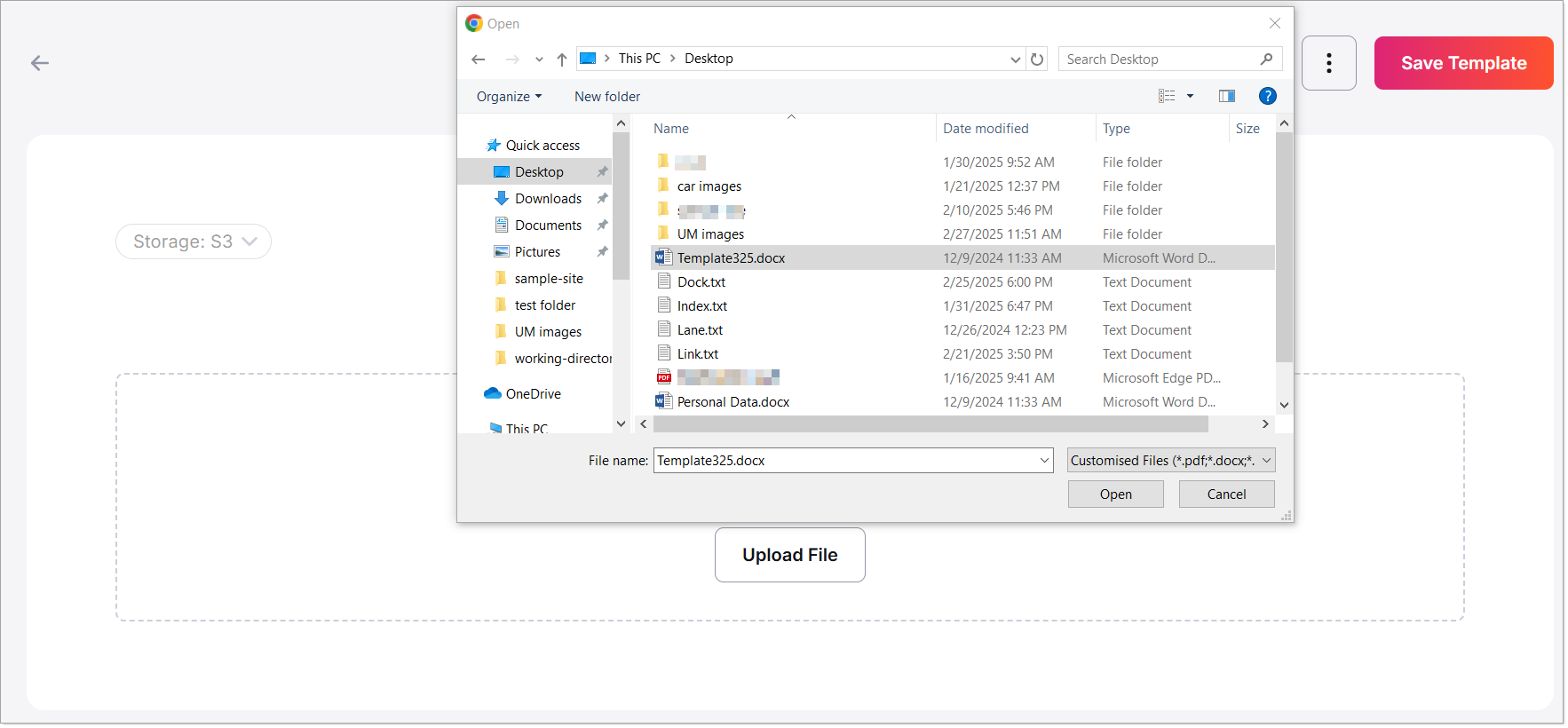Dock User Guide
Overview
Dock is a powerful and centralized document generation tool that simplifies the creation of professional and accurate documents. It leverages a template-based configuration, allowing users to predefine document structures with placeholders for dynamic data, reducing manual effort and minimizing errors.
Designed for scalability, Dock supports both individual and large-scale document generation needs, ensuring high performance and efficiency. Its API-first architecture enables seamless integration with various systems, while its low-code implementation ensures quick setup and minimal development effort.
Dock supports multiple document formats, including DOCX, PDF, and HTML, allowing flexibility in document generation. Additionally, its distributed and decoupled design enhances reliability and fault tolerance, ensuring uninterrupted document processing.

Dock
This guide provides step-by-step instructions to help you configure, create, and manage documents using Dock.
Key Features
-
Automated Document Generation: Easily create and automate documents by predefining templates with placeholders for dynamic data.
-
Easy and Swift Migration: Seamlessly migrate existing templates into Dock with support for DOCX, PDF, and HTML formats.
-
Scalable Performance: Generate documents individually or in bulk, handling thousands of documents within seconds.
-
Low-Code Integration: Quickly set up and integrate Dock with other systems using simple syntax, reducing development time.
-
Distributed and Decoupled Design: The decoupled architecture enhances reliability and ensures uninterrupted document generation.
-
Multiple Formats: Generate documents in various formats, including Word (DOCX), PDF, and HTML.
User Interface Overview
The Dock user interface is designed to provide an intuitive and efficient document generation experience. The main interface includes the following key sections:
-
Settings: Configure storage options, access credentials, and region settings.
-
Upload Document: Upload documents using drag-and-drop functionality or file browsing.
-
Create Template: Design templates for Word documents, SMS messages, and emails using a built-in editor.
-
Template Management: View, search, sort, and manage existing templates with options to download, edit, or delete.
Using Dock
Configuring Settings
- Click the Settings option from the main menu.

Settings

Settings
-
Select the desired Storage Type from the dropdown list (e.g., S3 for AWS S3 bucket).
-
Enter the following storage credentials:
-
Access Key: Input the access key for your S3 bucket or other selected storage type.
-
Secret Access Key: Input the corresponding secret access key (password).
-
Bucket Name: Input the name of the S3 bucket where documents will be stored.
-
Region Name: Specify the region of your S3 bucket.
-
-
Save your settings to apply the configuration.
Note: Ensure that the entered credentials are accurate to avoid connection issues.
Uploading a Template
- Select Upload Template from the main menu.

Uploading Templates

Uploading a Template
-
Choose the Storage Type from the dropdown menu (e.g., S3).
-
Upload the template using one of the following methods:
-
Drag and Drop: Drag the file into the upload area.
-
Browse: Click the Browse button to select and upload a file from your system.
-

Browse a Template
Creating a Template
- Click Create Template from the main menu.

Create Templates

Create Templates
-
Select the template type from the dropdown options:
-
Word for document templates.
-
SMS for text message templates.
-
Email for email templates.
-
-
Enter a name for the template in the Template Name field.
-
To enable quick access, toggle the Bookmarks option to bookmark the template.
-
Use the built-in Template Editor to design the template based on the selected format (Word, SMS, or Email). The editor supports placeholders for dynamic data insertion.
-
Click Save Template to save the template.
Tip: Use placeholders within the template editor to automate data population during document generation.
Managing Templates
- View Templates: The main interface displays all existing templates by default.

View Templates
- Search Templates: Use the Search Bar to quickly find specific templates by name or keywords.

Search Templates
- Sort Templates: Sort templates using the dropdown options:

Sort Templates
-
Name: Sort alphabetically.
-
Date Ascending: Sort by creation date (oldest first).
-
Date Descending: Sort by creation date (newest first).
-
Template Actions:

Template Actions
-
Download: Click the Download icon to save the template to your system.
-
Edit: Click the Edit icon to modify the template using the built-in editor.
-
Delete: Click the Delete icon to remove the template. Confirm the deletion when prompted.
Note: Use bookmarks to quickly access frequently used templates.
Support and Troubleshooting
If you encounter any issues while using Dock, refer to the troubleshooting tips below:
- Connection Issues: Verify that the storage credentials and region settings are correctly configured in the Settings section.
- Template Upload Errors: Ensure that the uploaded document is in a supported format (DOCX, PDF, or HTML).
- Document Generation Delays: Large document batches may take longer to process. Monitor system performance during high-volume tasks.
- Template Not Saving: Confirm that all mandatory fields are completed in the Create Template section before saving.
For additional support, contact the Dock support team or refer to the FAQs available in the application.
This concludes the Dock User Guide. Use this guide as a reference to configure, create, and manage documents efficiently using Dock.